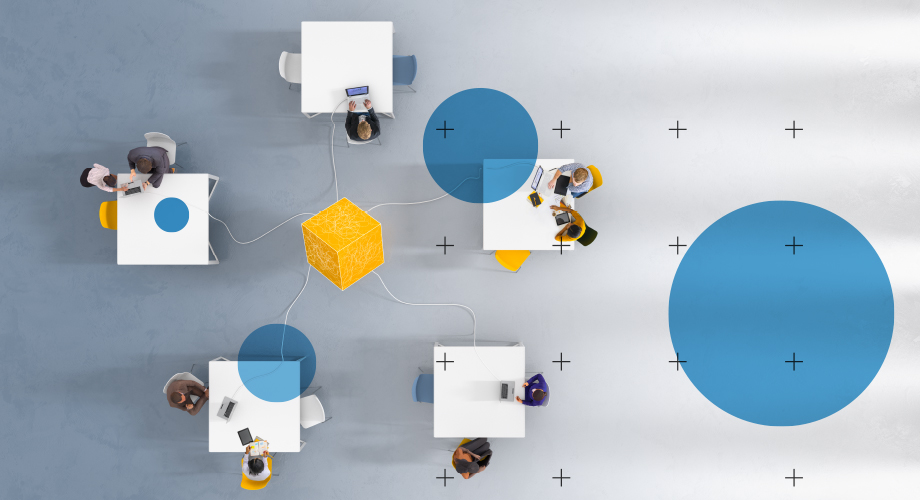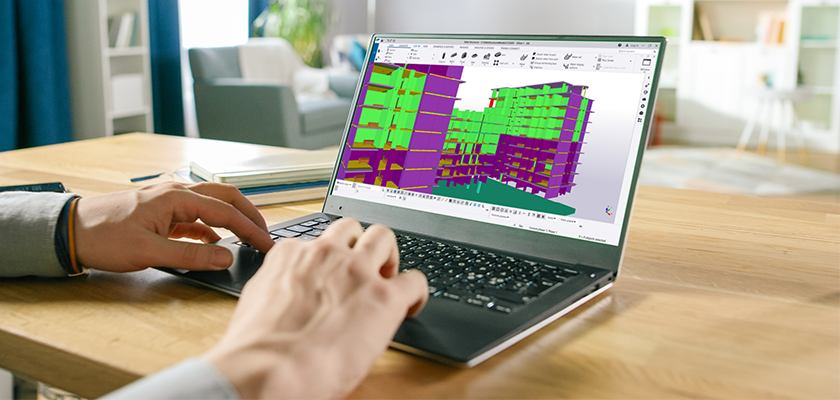
The flexibility of the workplace is becoming increasingly common, and more and more companies and employees are adopting a hybrid approach to working in the office and from home. Therefore, the demand for digital connectivity and collaboration is more important than ever before. Here, Craig Johnson, Development Manager for Trimble Deepening&Manufacturing Business, discusses the digital coordination requirements for connecting teams to data.
Mixed work has quickly become the norm, which may be driven by employees first. Throughout the entire COVID-19 pandemic, this demand for flexibility has certainly been further strengthened, and businesses are facing unprecedented challenges, with labor scattered across the country. Now, this new working method seems to continue, with over 80% of companies surveyed by the Chartered Institute of Management in the UK adopting a hybrid work system.

For an industry that has long been challenged by a lack of digitalization, remote work may become a catalyst needed in the construction industry. In fact, according to McKinsey's data, 50% of companies indicate that they have now increased their investment in digital technology and transformation to meet the next normal demand.
Whether working from home or in the office, digital connectivity and collaboration are the main driving factors for this more flexible approach, ensuring accurate and efficient project delivery no matter where the team is located. However, digital connections not only connect people, but also connect data and workflows.
Connected by
Perhaps the first example of collaboration within the construction industry is the collaboration between people; Whether within the company's project team or at a broader level, among project partners and stakeholders. In fact, effective communication and coordination in any project can mean the difference between successful project delivery and delayed and over budget delivery. The consequences of communication interruption can be serious, such as costly errors and rework, and severe project delays.
Digital technology has always been a key driver of this direct and sustainable level of communication. The rapid growth of video conferencing services during and after the epidemic control period is a good example. Cloud based software and other similar file sharing tools have also proven to be useful, providing a central hub where all project data (whether 3D, 2D, or 1D models, drawings, and schedules) can be stored and available for team viewing, discussion, sharing, and editing. Basically, a glue has formed that brings all data and personnel together, and accessing such a platform is crucial for communication and visibility.

A good example in this regard is the construction of Luton Railway Station, in which Hewson Consulting Engineers switched to the BIM collaboration tool Tekla Model Sharing for model sharing. Richard Scantlebury, the main project manager, explained: At the beginning of the project, we relied on Dropbox to transfer and share compressed model files. However, this was not only an unnecessary and lengthy process, but also limited who could work on the model. In fact, it hindered us - for example, if someone else was already working on the model, another person could no longer edit the drawing. That's why a few months after the project started, we chose to introduce Tekla Model Sharing "It truly changed our modeling process."
We have found it to be a very powerful supplement that helps promote more collaborative and coordinated ways of working - not only within our own engineering team, but also on a wider range of projects. Once, we had six people from three different companies working on the same model, and they were all able to seamlessly connect.
O'Reilly Concrete, Ireland's leading provider of prefabricated solutions, is another company that benefits from Tekla Model Sharing and cloud based collaboration tool Trimble Connect: "We can seamlessly switch between working in the office and working from home. Although not everyone is in the same place, we can still work as a team to deliver the most effective design or solution."

Off site construction&collaboration
Driven by digital technology, this level of collaboration and connectivity remains highly valuable, especially in off-site construction. Due to the nature of modularity and volumetric structure, pre panel structures or pods typically include MEP services and door and window spaces upon delivery to the site, and these modern methods require enhanced coordination among a wider range of project partners. Sigmat is one of the companies operating in the field of light metal frames and has been using the Trimble Connect tool.

Nick Milestone, Director of Operations, explained: In addition to using the Trimble Connect platform to share files and models within the Sigmat project team, we are also able to better communicate with clients and other key project stakeholders. Everyone is part of the same project. While collaboration is important for any building project, it may be particularly important in terms of off-site, volume, and modularity. For example, our pre panel framework typically requires close collaboration with mechanical and electrical contractors Coordinate and ensure that we all know what the other party is doing
Connect data
Besides connecting people, connecting data and workflow may be equally important - in fact, the two may be tightly intertwined, making it difficult to separate them.
In any construction project, there are so many different project partners, subcontractors, materials, and components. It is important to take a step back to ensure that the structure is considered and refined into a cohesive whole; All components and their respective data and workflows are interrelated and not considered in isolation. To achieve this goal, it is important for all parties to effectively coordinate with each other to ensure that their work does not overlap or conflict, and the enhanced visibility of BIM helps achieve the ideal of synchronizing and connecting workflows.

This level of interdisciplinary coordination is the topic we mentioned earlier regarding off-site construction. This is also why multi material software can bring so many advantages to construction workflows, making steel and concrete structures (such as) considered as a whole in a central model. James Gendall, the department director of Clancy Consulting, explained the benefits of this: "Although we may have different design packages for concrete and steel structures before, Tekla Structural Designer can be used for both situations. This is very valuable, and the reason is obvious. Whether it is the success of the project or the long-term performance of the structure, you can design, consider, and analyze both materials simultaneously to evaluate the correct stiffness relationship between the two."
The theme of connecting workflows is further led towards the concept of parametric modeling, where data is fully integrated and connected. Having 3D modeling software with continuous data transmission links as the core may be of great significance here. In fact, this ensures that data threads are maintained throughout the entire construction sequence and establishes streamlined links between the central model and all relevant manufacturing drawings, schedules, and quantity statistics. This not only enables drawings and files to be automatically generated based on the data contained in the 3D model, providing accuracy assurance, but also automatically reflects any last-minute design changes in the model in these same files.

When it comes to the benefits of integrating data workflows between Trimble's Tekla software, Stephen Nugent, the company director of Nugent Manufacturing, said, "For me, this digital workflow is the only way forward - it helps to integrate everything together, ensure they are interconnected, and there is no loss. Ultimately, the less manual work you have to do, the less manual data processing is better, which helps reduce the possibility of human errors."
Looking ahead to the future of the construction industry, digital technology will become the key to further promoting effective collaboration, coordination, and communication.









